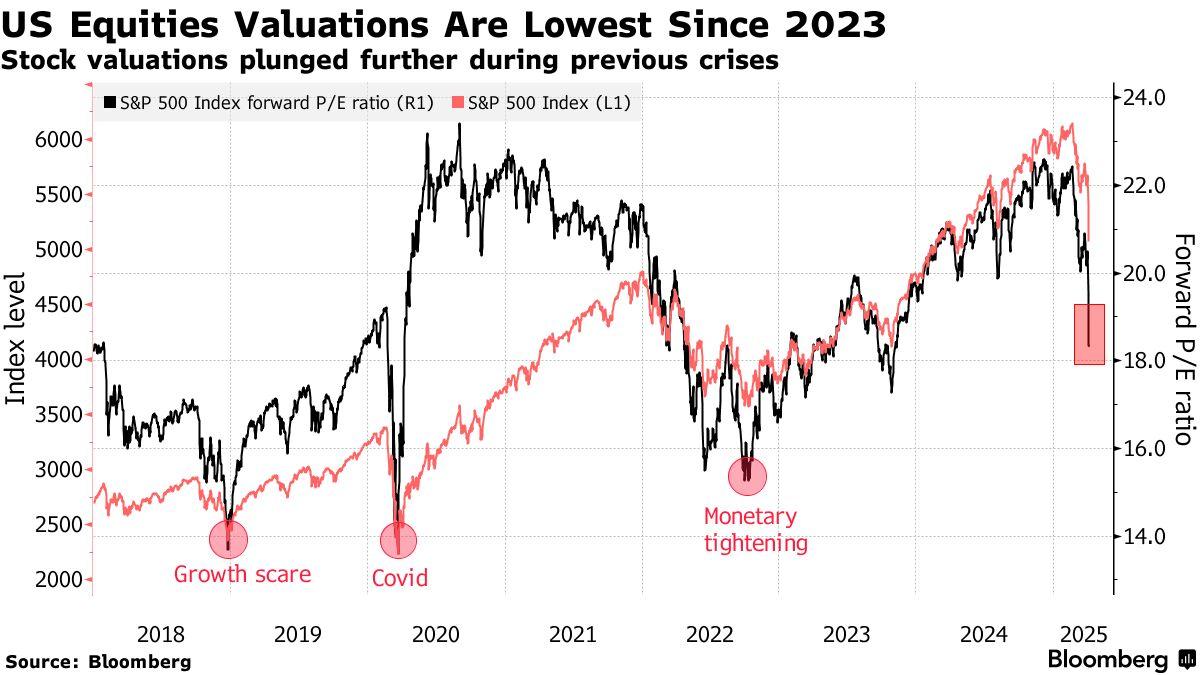Hope, Hype, or Headwinds? Navigating What’s Next
With the first quarter of 2025 now behind us, it almost feels like we have seen it all now. In March, markets delivered a mix of resilience and renewed volatility as investors spent most of the month watching and reacting to policy changes, executive orders, and, most significantly, tariff announcements. Since reaching its peak of 2025 in mid-February, the market has swung from almost a 20% decline to posting one of the largest gains we have seen in decades, all driven by the White House announcing both the imposition and pause on tariffs. After a hopeful start to the year, driven by cooling inflation and optimism around central bank rates easing, investor sentiment turned towards caution. Trade uncertainty, caused by a variety of factors influencing the economy, has triggered a pullback in the equity market, sparking familiar questions for investors surrounding the likelihood of a bear market.

As we navigate the upcoming weeks, it is important that we stay grounded in strategy and open to opportunity, even when it’s disguised as volatility. While short-term fluctuations may dominate headlines, at Stevens Capital Partners, our commitment remains focused on long-term fundamentals and positioning your portfolio for enduring success.
Trade Tensions Return
U.S. equity markets faced renewed headwinds as trade tensions resurfaced. The announcement of new tariffs, particularly a steep 145% rate on imports from China, sparked concern across global markets and weighed heavily on sectors with international exposure, including industrials, technology, and consumer discretionary. While a 90-day pause was granted for other trading partners, the policy shift introduced fresh uncertainty just as markets were attempting to regain their footing. As volatility surged and investor sentiment became more cautious, the VIX, Wall Street’s volatility gauge, spiked to levels we haven’t seen since 2008. This sharp rise highlights the extent of investor unease and the broader market's sensitivity to trade and policy developments. As investors reassessed earnings expectations, supply chain risks, and the potential for retaliatory action, it has become clear that staying disciplined through policy-driven disruption remains essential to long-term strategy.

The reinstatement of trade barriers between the U.S. and key global partners, especially in the technology and industrial sectors, has weighed on corporate sentiment and introduced a fresh layer of uncertainty in global supply chains. Equities in these sectors have reacted accordingly, with the decline of the Magnificent 7 pulling markets down with them. In March, the equity market saw a 5.63% decline, with 3.04% of this being driven by the decline in the Magnificent 7 stocks.
Equity Markets: Bearish Trends, or Buying Opportunity?
Just before the White House announced its 90-day delay on most reciprocal tariffs, both the Nasdaq composite and the Russell 2000 index had officially fallen into bear market territory, while the S&P 500 index hovered just above that critical threshold. Equity markets entered a technical correction in March, with most major indices pulling back 10-15% from recent highs. While that decline may feel uncomfortable, it’s worth noting that market corrections are a natural part of investing and often present opportunities for long-term investors.
The S&P 500 remains in a broad consolidation range, with sector-level divergence becoming more pronounced. Defensive sectors (utilities, healthcare) have outperformed, while cyclical and high-valuation tech names have faced pressure. Earnings estimates have been revised slightly downward, but not catastrophically, which suggests that the selloff has more to do with sentiment and macro uncertainty than deteriorating fundamentals.

For investors with a long-time horizon, the current environment may represent a constructive entry point. Valuations have come down, and several high-quality companies are trading at more attractive multiples.
A Resilient Economy, But Slower Momentum

U.S. GDP growth moderated in the first quarter of 2025, reflecting the cumulative impact of tighter monetary policy, softer global demand, and a gradual wind-down of pandemic-era fiscal stimulus. While the economy continues to expand, the pace of growth has slowed. The labor market remains relatively stable, but wage growth has started to cool, an indication that the Federal Reserve’s tightening cycle may be working as intended, without tipping the economy into recession. Inflation has continued to ease overall, though progress has been uneven. While headline CPI readings have declined by 0.1% in March, core inflation is still up 2.4% (not seasonally adjusted) from where we were this time last year. This has prompted the Fed and other central banks to maintain a cautious tone. As a result, market expectations for rate cuts have been tempered.
Looking Ahead
While the precise path of tariffs and inflation remains uncertain, what we can control are the factors that drive long-term success: strategic asset allocation, robust diversification, and unwavering discipline to stay on track. In a market defined by short-term volatility, maintaining a portfolio aligned with your goals and time horizon is crucial.
In light of current market conditions, there are several opportunities for investors. For those who don’t need to access more than 25% of their invested assets within the next five years, today’s volatility could present a chance to strategically add to equities. Employing a dollar-cost averaging strategy allows for selective investing, especially in sectors that have experienced sharper corrections, enhancing future returns without significantly increasing short-term risk. For those with longer time horizons and a higher tolerance for risk, rebalancing your portfolio back to target allocations can be a disciplined way to take advantage of market dips, positioning for future growth. Additionally, in times of market turbulence, tax-loss harvesting provides an opportunity to sell underperforming assets, offsetting capital gains and potentially lowering your tax liability for the year.
Ultimately, at Stevens Capital Partners, our focus remains on guiding you through these uncertain times with a disciplined, long-term approach, always keeping your goals at the forefront. While the market may experience turbulence, staying committed to a well-diversified strategy ensures that we are well positioned for the future. Rest assured, we are here to navigate these challenges alongside you, with your financial well-being as our top priority.
















